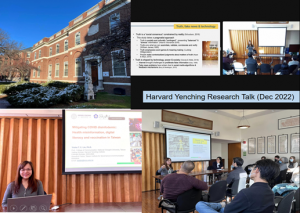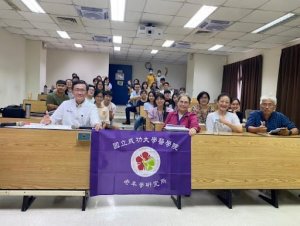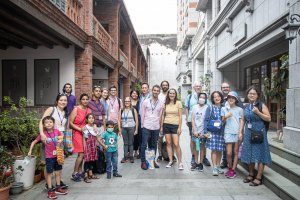Social worlds and social relationships are created, maintained, and resisted through human communication. The best of communication scholarship emerges through researchers’ willingness and ability to listen, by recognizing the perspectives of others, and learning through the nuances and complexities of communication practices. This is particularly important when working with marginalized and underserved populations, whose voices are often deprived and silenced, resulting in disparities in their everyday life. These are the values that have driven my research program for nearly two decades. Interests in and empathy for humans and the human phenomenon is fundamental to the scholarship of any social scientist.
I have dedicated my research to understanding how linguistic and cultural differences can create barriers to patients’ health experiences, including their access to and process of care. In particular, I am interested in how language-discordant patients, such as patients with English-limited proficiency (LEP), coordinate and negotiate healthcare services with their healthcare providers. As I presented my model of Bilingual Health Communication (Hsieh, 2016), a communicative model that aims to provide guidance for interpreter-mediated provider-patient interactions, to various groups in the United States, interpreters of American Sign Language often told me that their deaf patients are different from LEP patients, as they often come from hearing families and thus, remain a minority and an isolated member in their homes. In contrast, though most LEP patients do not share the same language with the host society or their physicians, they do share the same culture at home with their family members. As I hear more about the stories and struggles of deaf patients, I realize that foreign spouses and workers in Taiwan present great entry points to examine the phenomenon of language-discordance in healthcare settings.
I am grateful for the Fulbright Foundation’s support for my research project, Quality of Care for Interpreter-Mediated Medical Encounters in Taiwan. In the last four months, I have had the opportunities to interview individuals and conduct focus groups with over 30 research participants, including healthcare providers, immigrants, and healthcare interpreters (who are also immigrants) to explore the different challenges and barriers to care faced by language-discordant immigrants and workers in Taiwan. My experiences in Taiwan, with Fulbright, and through my research participants, however, have created fundamental shifts and changes in my work and my identity as a communication scholar. In fact, I am still processing much of the information and experiences that I have had so far. As a result, I do not wish to limit my discussion to my research work. Rather, I want to share with readers my reflections and new perspectives, however raw and preliminary, which have challenged the many beliefs that I have taken-for-granted prior to my Fulbright journey in Taiwan.
1. Taiwan is resilient because there are many people who are dedicated to make this a better place for future generations. When living in the U.S., it is hard not to believe that Taiwan is becoming inconsequential and irrelevant in an increasingly globalized world. As real average wages remain stagnant[1], it is easy to say that the prime days are long gone. Nevertheless, I am deeply touched by the many people I met. Many Fulbrighters are eager to bring their knowledge and networks in the U.S. to Taiwan, believing that Taiwan still has great resources (e.g., coral reefs and architectural structures) to protect and remains a rich ground for innovation (e.g., performance arts). Many physicians are eager to inform me about the challenges that they face under the national health insurance system while working to protect the quality of care. Many of the immigrants (from Indonesia, Thailand, Myanmar, or Vietnam, among others) can be easily categorized as marginalized populations, who often are at the mercy of government policies and social welfare. Nevertheless, when I think about the resilience of Taiwan and the people here, my mind drifts toward a conversation that I had with a new immigrant who first arrived as a foreign spouse. She recounted every kindness she has received, big or small, during her years in Taiwan, and concluded, “I do not have much education and cannot make any meaningful income. But I promise myself, I have to give back to the land that has treated me with such support. I am committed to donate blood whenever I can and as long as I can. That is the least I can do for Taiwan, my new home.” There are countless people doing whatever they can, however little, to protect Taiwan, the country they love.
2. Sometimes the ones who suffered the most also have the biggest smile. Throughout my career, I have always kept an emotional distance from my research participants. I have conducted many interviews with the interviewees crying uncontrollably (e.g., about their terminal cancer and their future), but I was fine. I thought that it came from the training from my medical interpreter years. To do a good job, I need to focus on the quality of data, be empathetic but maintain control over my emotions. I pride myself in finding those boundaries. However, many of my interviews with Southeast Asian women who married Taiwanese men for a better future have challenged my roles and skills as a researcher like never before. My participants smiled and laughed about their struggles and suffering. One talked about hiding severe illness and tolerating unbearable spinal injury, a broken, nerve-pinching disk that often rendered her shivering for hours; yet she remained silent because she was afraid to be sent back to Thailand by her employer and later became undocumented as she could no longer perform her job. Another talked about struggling to survive with two young kids after a terrible car accident that resulted in her husband’s vegetative state while realizing that her husband’s insurance compensation was taken away by relatives. I did not know how to “probe” or ask them to stick to my research questions. For the first time, I felt like crying during an interview and found myself speechless after one even though their eyes did not even show the slightest sign of tearing up. They endured and they persevered.
3. The phenomenon of language discordance has different meanings in the U.S. and in Taiwan. The literature on language access/barriers in healthcare settings and minority health in the West has provided conclusive evidence that when patients do not share the same language with their providers, they experience significant health disparities at all stages of care. They also often face stigmatization and prejudicial attitudes due to their outsider, minority status. That is why when I first thought about language-discordant patients in Taiwan, I had foreign workers and immigrants from Southeast Asiancountries in mind. There have been many studies about Southeast Asian immigrants and workers’ experiences of social stigma in Taiwan (楊婉瑩& 張雅雯, 2014).
Nevertheless, as I asked physicians, “What are the challenges you face when talking to language-discordant patients and how do you usually cope with these challenges?,” I was surprised by the physicians’ responses. “Do you mean how I treat elderly patients who only speak Taiwanese because I’m a second generation mainlander who only speaks Mandarin Chinese?” “Yeah, it’s difficult to work with patients who only speak Taiwanese, Hakka, or aboriginal languages.” Their response jolted my understanding of language discordance as a social phenomenon in Taiwan.
My conceptualization of language-discordant patients has been shaped by the literature in the West. In the U.S., English is the dominant language. LEP patients in the U.S. are thus often conceptualized as outsiders, a particular type of cultural and linguistic minority. However, although Mandarin Chinese currently is the dominant language in Taiwan, it only became the official language after the government of Republic of China (R.O.C.) took over Taiwan from the Japanese government after WWII, which had controlled and colonized Taiwan from 1895 to 1945. By 1949, R.O.C. government resettled in Taiwan after losing control of mainland China. During 1945-1950, roughly 2 million wai sheng ren (外省人, which literally means “outside province people”) moved from mainland China to Taiwan, which had a population of 6.27 million at the time. Although wai sheng ren account for less than a quarter of the total population in Taiwan, the R.O.C. government made Mandarin Chinese the official language for the government and all educational settings. Thus, it became the language of all intellectuals and the dominant language in Taiwan. Nevertheless, Taiwanese and Hakka remain common, if not dominant, languages spoken by ben sheng ren[2] (本省人, which means “original province people”) in everyday life in some regions to this day (洪惟仁, 2002).
In summary, the phenomenon of language discordance is situated in the complex tensions of political power and linguistic legitimacy. Whereas an LEP patient in the U.S. can be viewed as an outsider, a Taiwanese or Hakka-speaking patient in Taiwan is, in fact, a “local.” In the case of a patient who speaks only Taiwanese, s/he is also likely to be a member of the ethnic majority. Nevertheless, the fact that the patient has limited Mandarin Chinese proficiency suggests other potential constraints and barriers to care (e.g., low health literacy and low socioeconomic status) as s/he is likely to be less educated and to be disconnected from the larger society.
4. Language-discordant patients may not share similar experiences even if they are in the same country. After recognizing the complexity of language discordance in Taiwan, I began to develop a more nuanced view about how language discordance can shape individuals’ health experiences. For example, because English is the dominant language for medical education and healthcare settings in Taiwan[3] (e.g., medical textbooks are often in English, patients’ medical records are often written in English, and prescriptions are also often in English), all healthcare providers would be able to communicate to non-Mandarin-speaking but English-speaking patients through written if not spoken English. As a result, language-discordant patients who are fluent in English are likely to have better quality of care than a Taiwanese-speaking only patient, despite his/her local status.
5. Disparities in language-discordance are situated in the larger sociocultural contexts, which may entail other disparities. In Asia, one’s English proficiency is often tied to his/her education level. In addition, not all language-discordant workers from foreign countries are of equal footing in Taiwan. The laws in Taiwan created two categories of foreign workers: blue-collar and white-collar workers. Blue-collar workers are mostly from Southeast Asian countries. They generally are workers of intensive labor and domestic caregiving with lesser education. In contrast, white-collar workers are often from developed countries such as the U.S. and Japan. They are specialized experts, holding positions as technicians, managers, or educators. As a result, these patients are likely to have higher health literacy than blue-collar workers, and thus, enjoy better health outcomes. In addition, because white-collar workers’ higher level of education, they are also more likely to be able to speak English, and thus, ensure better quality of communication with their providers in Taiwan.
With these new insights, there are three interesting twists to the phenomenon of language-discordance in Taiwan. First, the quality of care for language discordant patients is likely to be mediated by their abilities to speak English and moderated by other factors. I suspect that this phenomenon is not limited to Taiwan. After all, due to the West’s dominance in medicine and technology, health care providers all over the world often need to be fluent in English to keep up with the latest medical breakthroughs and treatment recommendations. Whereas the current literature in the West has centered on patients’ language concordance status within the host society to define their health experiences, my new findings suggest that a language-discordant patient with some level of English proficiency is likely to secure better provider-patient communication. In addition, not all language-discordant patients face the same challenges. Some may experience greater challenges due to disparities in other areas (e.g., education level and socioeconomic status). It would be inappropriate to assume that a Japanese-speaking white-collar worker and an Indonesian-speaking blue-collar domestic care worker face similar challenges or require similar assistances when accessing healthcare services in Taiwan.
Second, it may be important to consider sociocultural factors of a particular society in conceptualizing language-discordant patients’ care. An under-theorized and under-synthesized area of research on LEP patients is the various factors that may serve as mediating and moderating factors for language-discordant patients’ experiences in healthcare settings. When thinking about LEP patients, one’s mind typically gravitates towards Spanish-speaking Latino patients rather than German-speaking Caucasian patients. This may be because most German patients are also likely to be able to communicate in English. However, when talking to my research participants, white privilege emerged as an important issue. Because white privilege[4] is a prevalent ideology in Asia (Isa & Kramer, 2003), it is possible that skin color also may be a factor in shaping language-discordant patients’ experiences.
In some ways, these issues can be confounded as skin color is often correlated with other social determinants (e.g., Caucasian workers in Taiwan are more likely to be white-collar workers or darker-skin, Asian-looking workers in Taiwan are more likely to be from Thailand than from Japan). Such correlations are a result of historical contexts, rather than biological determinants. Nevertheless, these correlations, as reflected in normative attitudes, can result in disparities in healthcare delivery.
Finally, ensuring the quality of communication for language-discordant individuals is essential to ensure the quality of care for these individuals as well as the people they care for. Many providers commented that it is becoming increasingly common for the foreign workers, who work as domestic caregivers, to bring the elderly whom they care for to healthcare settings. They (as opposed to the patients’ children) are the ones that provide details about the patient to ensure an accurate diagnosis and appropriate treatments. The literature has suggested that a parent’s LEP status is an important indicator to a child’s quality of care and health outcomes (Flores, Abreu, & Tomany-Korman, 2005). Following the same logic, as Asian countries increasingly rely on foreign workers to engage in caregiving work for the elderly and the weak (e.g., individuals with disabilities, including children) in response to their aging population, providing language access to language-discordant individuals at healthcare settings is critical to ensure the quality of care for all, especially for the marginalized.
References
DGBAS. (2015). National statistics. Retrieved December 6, 2015, from http://eng.dgbas.gov.tw
Flores, G., Abreu, M., & Tomany-Korman, S. C. (2005). Limited English proficiency, primary language at home, and disparities in children’s health care: How language barriers are measured matters. Public Health Reports, 120, 418-430.
Hsieh, E. (2016). Bilingual Health Communication: Working with interpreters in cross-cultural care. New York, NY: Routledge.
Isa, M., & Kramer, E. M. (2003). Adopting the Causasian “look”: Reorganizing the minority face. In E. M. Kramer (Ed.), The emerging monoculture: Assimilation and the “model minority” (pp. 41-74). Westport, CT: Praeger.
楊婉瑩, & 張雅雯. (2014). 為什麼反對移工/移民?-利益衝突抑或文化排斥. [Who Opposes Immigration?-Interest Conflict and Cultural Exclusion Explanations]. 政治科學論叢, 43-84.
洪惟仁. (2002). 台灣的語言政策何去何從. Retrieved December 4, 2015, from http://mail.tku.edu.tw/cfshih/ln/paper18.htm
舒子榕, 魏怡嘉, & 呂素麗. (2015). 反彈聲浪大病歷中文化別提了.中時電子報. Retrieved from http://www.chinatimes.com/newspapers/20150122000491-260114
陳香如, & 郭哲瑋. (2014). 台灣薪資停滯之可能原因與解決方式2014 年經濟年鑑專論(pp. 32-39). Taipei, Taiwan: 經濟日報.
[1]Real average salaries in Taiwan have stagnated since 1996 (陳香如& 郭哲瑋, 2014). According to a report from the Directorate General of Budget, Accounting and Statistics (DGBAS) of R.O.C., the real regular earnings in Taiwan in September 2015 were, in fact, lower than that of 2000, despite that it is the highest in the same period in the last 8 years (DGBAS, 2015).
[2]Traditionally, ben sheng ren refers to all ethnic groups, including Han Chinese, who reside in Taiwan prior to 1945. Wai sheng ren refers to individuals (and their children) who moved from China to Taiwan primarily between 1945-1950, when the R.O.C. government lost control of China and resettled in Taiwan.
[3]In early 2015, several legislators proposed to require medical records to be written in Chinese, but faced strong oppositions from many medical associations and healthcare practitioners. The legislation never made it to the floor (舒子榕, 魏怡嘉, & 呂素麗, 2015).
[4]White privilege as a cultural phenomenon in Asia can be reflected in different ways. For example, many women in Taiwan engage in health practices (e.g., getting skin-lightening injections and using “whitening” skincare products) to maintain a light-skin complexion. It can also be reflected in the preferential treatment for Caucasians. One event came to mind as I wrote these paragraphs. I experienced a sudden flare up of severe hives around 10:30PM one day. When I arrived at the dermatology clinic, I saw the clinic staff asked an anxious mother to either send her four year-old to emergency care or come back the next day as the clinic has stopped admitting patients for the day. As I turned to leave the clinic, my husband, who is a White American and was not aware of the earlier conversation (since he knows little Mandarin Chinese), rushed to the nurses and raised my arms to show them my symptoms. He talked in English, with great urgency. I was rushed into the exam room and got my medicine within 10 minutes. Later, my husband jokingly said, “Well, I know enough to use my white privilege if necessary. I was really worried.” It is true that in that particular case, my husband’s white privilege provided me the courtesy privilege (i.e., privileges extended to individuals affiliated with the privileged) that allowed me to receive care when a four-year old’s health concerns were turned away.







